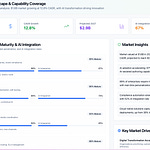Mike Porter has built a career on words. He’s been writing about mail and customer communications since 2010, ghostwriting business books, and creating content that gives companies and business leaders credibility in a crowded market.
But what stood out most in Episode #11 of Above the Treeline is how seamlessly Porter ties writing to the other two themes shaping our industry today: direct mail and AI.
Writing in the Age of AI
Porter doesn’t waste time debating whether a piece was AI-assisted or human-written. His point is simple: if it delivers value and it’s accurate, does it matter who — or what — wrote it? (em-dashes included).
That perspective feels refreshing in an era where AI checkers are flagging three-year-old articles as “40% AI generated.” We’re all tired of the hype cycle. The question isn’t whether AI touched the text, but whether the content has something to say.
And books, Porter argues, still have unmatched staying power. A published book gives instant credibility a clear sign that you know your craft, whether or not anyone finishes the last chapter. In B2B markets where thought leadership sways decisions, that matters more than likes or impressions.
Direct Mail as a Data Channel
Direct mail has never been about nostalgia. It has always been about business results.
Porter reminds us that a physical address is more than a delivery point, it’s a data asset. It holds demographic, geographic, and economic signals that make campaigns smarter.
“Mailers need to think of themselves as data companies who happen to mail.”
When paired with digital QR codes, PURLs, USPS Informed Delivery direct mail becomes a bridge. It’s an on-ramp to digital engagement or a re-engagement tool when email and online channels go dark. That’s why mail continues to justify its place in the mix: not because of tradition, but because of measurable ROI.
AI Beyond Content
When most people hear “AI,” they think chatbots and automated writing. Porter sees something bigger: AI as an engine for targeting, prioritization, and market discovery.
If AI can help you identify your best prospects, justify higher-value campaigns, or make smarter use of data, it changes the economics of communication. And while hype fatigue is real, the technology is already reshaping how firms think about unifying transactional and marketing messages into a single customer conversation.
As Porter put it, AI is less about replacing writers and more about accelerating the insights that make communication effective.
Andy’s Take
I see a clear throughline in Porter’s work: words, addresses, and data.
Writing gives leaders a voice.
Direct mail gives businesses a measurable bridge to digital.
AI gives us the tools to make both smarter.
The future of communications won’t be about clinging to print or chasing the next AI feature. It will be about combining tools in ways that create credibility, value, and results.
If you’re looking to tell your story or engage in the latest thought leadership in print and mail, connect with Mike Porter on LinkedIn: https://www.linkedin.com/in/pmcmikeporter/










